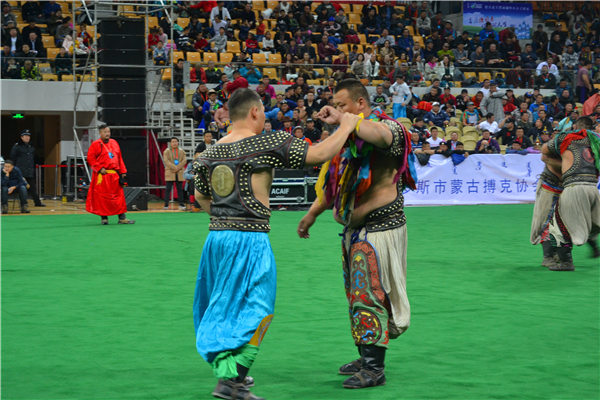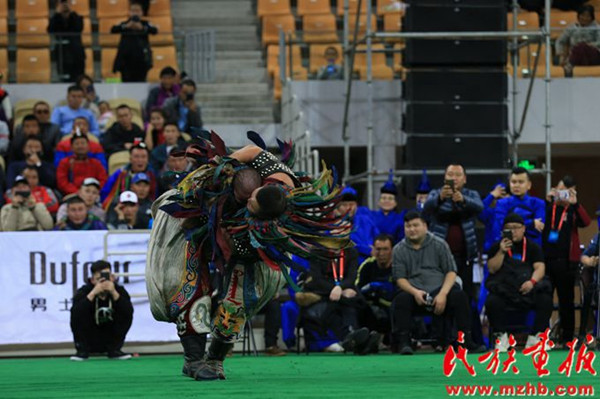Mongolian wrestling competition held in Ordos

The 2017 International Mongolian Boke Gold Belt Championship took place in Ordos, Inner Mongolia autonomous region, on Nov 18.
Boke, the Mongolian word for wrestling, has a history dating back more than 2,000 years. It is a rugged hand-to-hand sport, relying more on raw physical power than a wide variety of techniques, and is a favorite of Mongolian athletes, scholars and statesmen for its unique combination of athleticism and aesthetics.
The gold belt championship, regarded as a top Mongolian wrestling competition in China, attracted 256 wrestlers from 10 countries this year. The eventual champion was Chaganzhana from Xiliin Gol League in Inner Mongolia. He became the first Chinese winner at the competition with the previous winners having all come from Mongolia.

Wrestlers at the competition square up to each other. [Photo/ordosnews.com]

The winner at the competition poses for a photograph. [Photo/mzhb.com]

A contestant slams his rival to the ground during the competition. [Photo/mzhb.com]
Boke or Mongolian wrestling is different from both Chinese wrestling and Japanese sumo wrestling –– distinguished by its rules, methods, uniforms and fields. There are no weight or age restrictions, nor fixed numbers, as long as the numbers are even numbers starting from two, four, six, eight, 16, then continuing to double through to 128.
All wrestlers are matched by drawing straws or are chosen by respected judges. The game uses single-elimination rules, in that victory or defeat is determined once. The loser is not allowed to compete again; therefore half of the contestants will be eliminated each time.
At the judge’s call, opponents first shake hands to show respect to each other, and then begin to wrestle. There is no time limit and the opponents can pull, kick, trip, push and hold. However, contestants are not allowed to wrestle while holding the other's legs, kick arbitrarily, or pull the other's trousers. The person who touches the ground with any part of the body above the knee is the loser.
MOST POPULAR
Editors' Picks
 Infographic:
Milestones in China's high-speed railway development
Infographic:
Milestones in China's high-speed railway development
 Infographic:
China's NEV industry performance review
Infographic:
China's NEV industry performance review
 Infographic:
China's low-altitude economy: A transformative force
Infographic:
China's low-altitude economy: A transformative force




